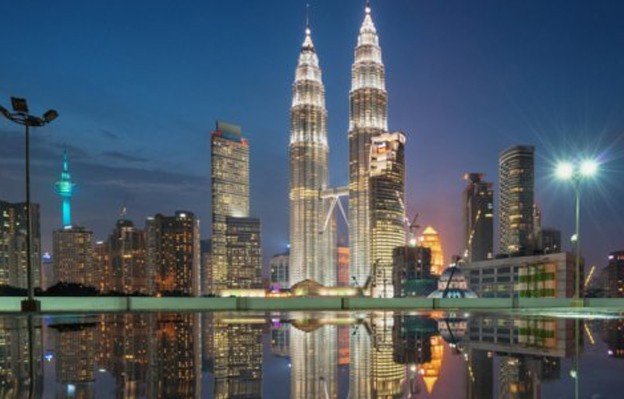Hyperscale data centers are known to move billions of bits of data in a single second, making the connectivity flawless and super-fast. Talking about Malaysia, tech giants are making it clear to build humongous hyperscale data centers in Malaysia. Malaysia’s population is 32 billion with land 35% bigger than the United Kingdom. Hence, opportunities for cloud hyperscale galore here!
Already, data center providers and cloud operators such as Alibaba Cloud and Microsoft Azure are established here and are planning to expand even further.
One of the Malaysia Data Center Market Report stated that the market for data centers in Malaysia is likely to increase by $800 million in 2025. Hence, there have been constant talks regarding making Malaysia the main hub for data centers, replacing the neighbor Singapore.
However, it is yet to find out whether Malaysia is a good spot for hyperscale companies!
Is Malaysia worth it for hyperscale companies?
Henrick Choo, CEO of NTT Ltd. in Malaysia explained the importance of Malaysia in terms of making it a data center hub. He said that Malaysia is an excellent location in Southeast Asia for data centers. With abundant resources available here and relaxed governmental policies, the country seems a perfect fit for the data center infrastructure.
Apart from that, Malaysia holds another bunch of advantages such as low electricity costs, an abundance of skilled workers, cheaper construction costs, and a low price of land as compared to the other countries in Southeast Asia.
Malaysia is also a great location for NTT without any single doubt. Its data center campus has grown to five more data centers in Cyberjaya. Another data center, CBJ5 was launched just last year.
Choo also stated that the development of Multimedia Super Corridor (MSC Malaysia) and Cyberjaya especially have made an open ecosystem for the business community to grow more and more. Cyberjaya in Malaysia was developed with the thought to replicate Silicon Valley in the US.
Hyperscale & Renewable Energy
Hyperscale is definitely a demanding technology to play rightfully as it would require huge power to operate in the right manner. Hence, Chiew Kok Hin who is the CEO of AIMS highlighted the increasing number of data centers and their potential impact on the power grid.
So, he identified that hyperscalers are the main reason why companies must tap into renewable energy in order to shed the burden off the power grid. Growing power demands are not ideal for an environment.
Therefore, Malaysia’s efforts in projects of renewable energy are quite satisfying and make Malaysia a perfect place for hyperscale data centers. Currently, renewables are contributing around 18 percent to fulfilling the country’s power demands. Moreover, the authorities are planning to move the number to a whopping 31 percent by 2025 and 40 percent by 2030. Such an aggressive move will very much push the data center providers to invest in Malaysia even more.
Nonetheless, Chiew also said that Malaysia’s initiatives regarding renewable energy do look promising. But directly piping renewable energy to data centers is not an easy task.
He further added that the data center power demands increase at a rapid pace as the IT requirements are increased or colocation project activation. However, renewable energy is mostly used for pre-designed load management.
Considering these shortcomings of renewable energy, it is important to source accurate renewable energy power farms to extract energy for the data centers. While giving an example, Chiew said that solar energy varies constantly, sometimes due to rain and sometimes due to excessive cloud cover.
In order to deliver energy to the data center optimally and when it is needed, it is vital to understand that huge energy storage systems would be required to deliver when the demand is there. In this regard, hydroelectric power plants are less affected. But the locations that are fine might not be close to cities or industrial areas.
So, another solution for it is to obtain renewable energy certificates. Chiew said that they are working on obtaining certificates. He said that they are currently studying the feasibility of renewable energy by acquiring solar energy systems or by acquiring renewable energy certification that would be globally recognized in order to promote the growth and usage of renewable energy.
Malaysia Proving its Worth against its Counterpart Singapore
Singapore’s data center moratorium is responsible for the growth in the construction of data centers in Malaysia, according to both Choo and Chiew. For example, Singapore-based Bridge Data Center highlighted its intention to build a Singapore Data Center, in 2018. After 3 years of having no Singapore facility as of now, it made an announcement to build a Greenfield Facility in Malaysia in order to express approval for the two facilities that it had acquired already in Malaysia.
Choo mentioned that Singapore, undoubtedly, has been an ICT and financial hub in Southeast Asia for the past 30 years. It has been the main front for the industry. However, the demand has been constantly increasing. Cost to market, labor demands, data recovery, and network diversity, all are increasing due to which there is a need for an alternate hyperscale data center hub.
Hence, Malaysia proved its worth and ticked all the boxes to become an alternate gateway.
The welcoming environment and cost-effectiveness here in Malaysia are the primary indicators for the ability to hyperscale in Malaysia. Therefore, it is actually a good location for hyperscale data center providers to further expand their operations.
That being said, Malaysia will remain to be an alternate location in Southeast Asia and will not replace any geo-location. The goal would be to make Malaysia a complementary piece to improve a company’s overall architecture plan. Choo said.

On the other hand, Chiew praised the connectivity power of Malaysia with the rest of Southeast Asia. He said that Malaysia would complement Singapore by providing regional connections in order to meet the growing local needs.
Problems in the Connectivity
Previously, in Malaysia, the complaints about slow internet were pretty regular. The slow internet connectivity was due to a small number of submarine cables landing in Malaysia. However, the complaints regarding slow internet have been resolved to a great extent. Nonetheless, a new problem is looking to threaten the popularity of data centers in Malaysia. The problem is “Cabotage exemption”.
The problem was identified in November 2020.
Cabotage is basically the right to operate by sea, air, or other transportation in a particular territory.
States always apply cabotage in their own waters in order to safeguard their local locations. But in 2019, Malaysia applied for exemption from cabotage. Hence, foreign-flagged vessels were then allowed to repair undersea cables. It allowed us to speed up the undersea fiber projects. Plus, options and capacity were also increased beyond a single local provider to carry on the repairs every time.
Canceling the cabotage exemption would take the time back to the previous status quo. Plus, there would be a requirement for the telecoms to apply for a domestic shipping license before they start working and it can take up to 100 days.
The repeal is forced by the government as mentioned by the detractors. They said that it is Malaysia’s revenge for the exclusion from a number of subsea cables. However, the Malaysian shipowners’ Association highlighted that Malaysia’s exclusion from various subsea projects was due to the little or no investment by the local telecommunication players as they were not fully participating.
Nonetheless, the decision is yet to be taken and nothing is finalized.
A Triumph for the Region
Though Covid-19 was actually lethal in taking lives. Yet, it made clear that going digital would be the future for consumers as well as for businesses. As everyone witnessed, the digital demand increased dramatically during the pandemic. Hence, data centers started to grow in popularity.
Chinese tech giants entered Malaysia and were always looking to expand their operations worldwide.
The battle for a regional digital hub has already started. The government of Malaysia created and showcased a blueprint known as “MyDigital” to highlight itself as the regional leader in the fresh digital era.
The blueprint is all about increasing local data centers in Malaysia in order to support hyperscale cloud computing and a government-driven cloud-first strategy. Considering this fact, tech giants like Microsoft, Google, Amazon, and Telekom Malaysia were given permission to build hyperscale data centers in Malaysia.
The bottom Line
Nevertheless, considering the amazing growth in the hyperscale data centers, we can surely say that Malaysia would do extremely well in the race. Chiew stated that as Singapore’s and Malaysia’s data center capabilities would improve, so will the human resources and other technical abilities would increase. Therefore, the interconnection of skills and capabilities would make Southeast Asia grow further.
Moreover, such growth would accelerate the strength of Southeast Asia to become one of the fastest-growing markets for hyperscale data centers in the whole world. So, data would easily be handled, thanks to the hyperscale culture!









